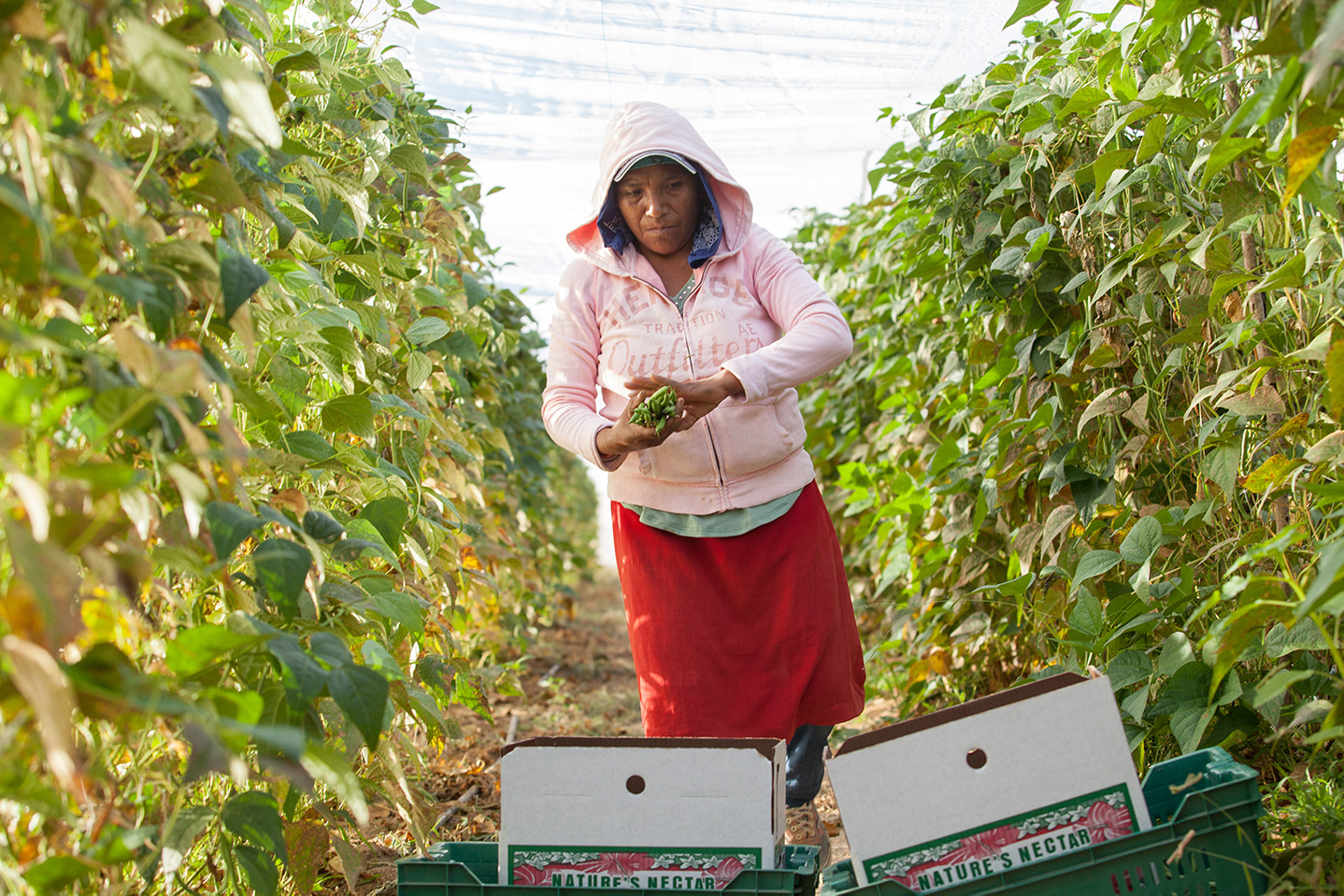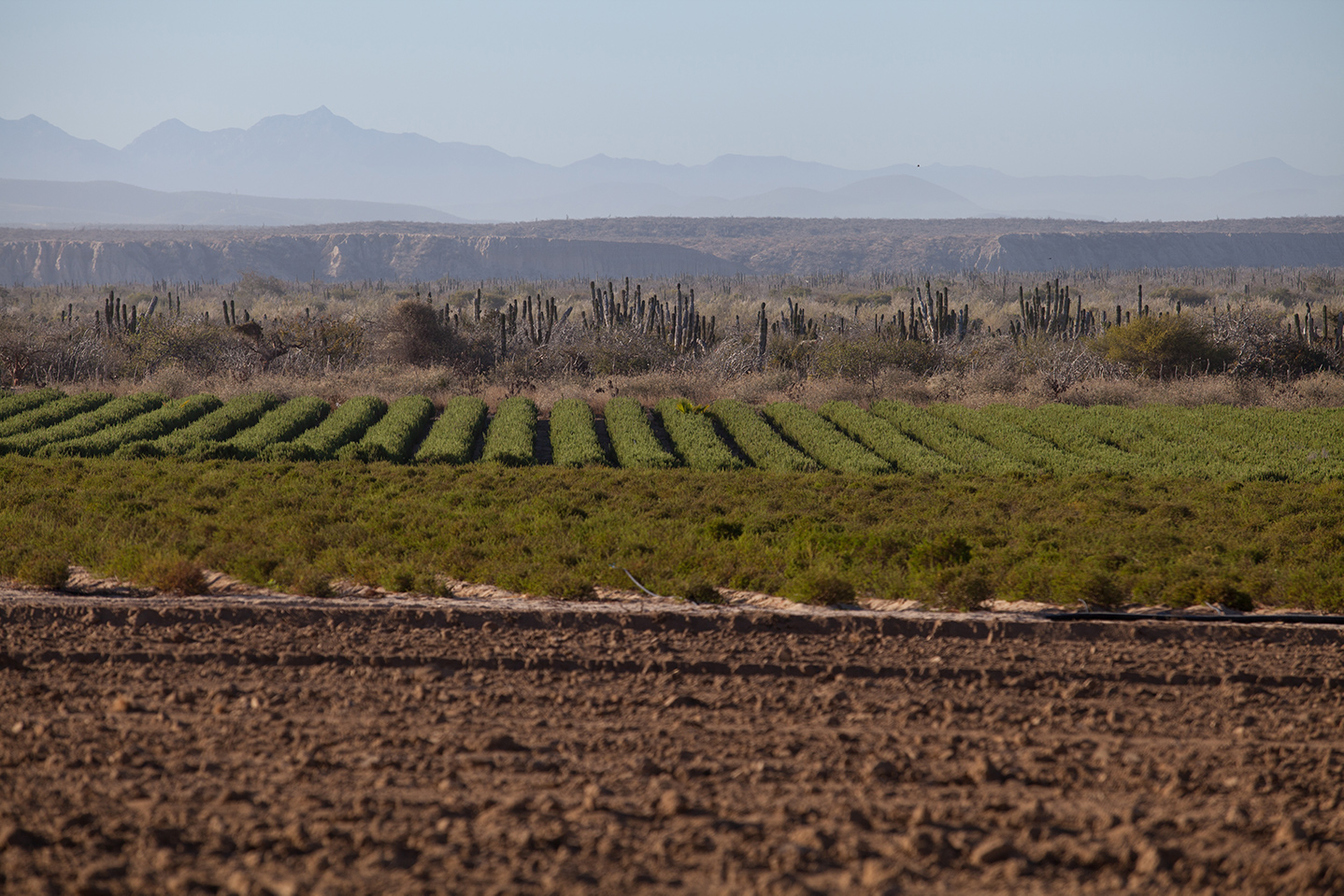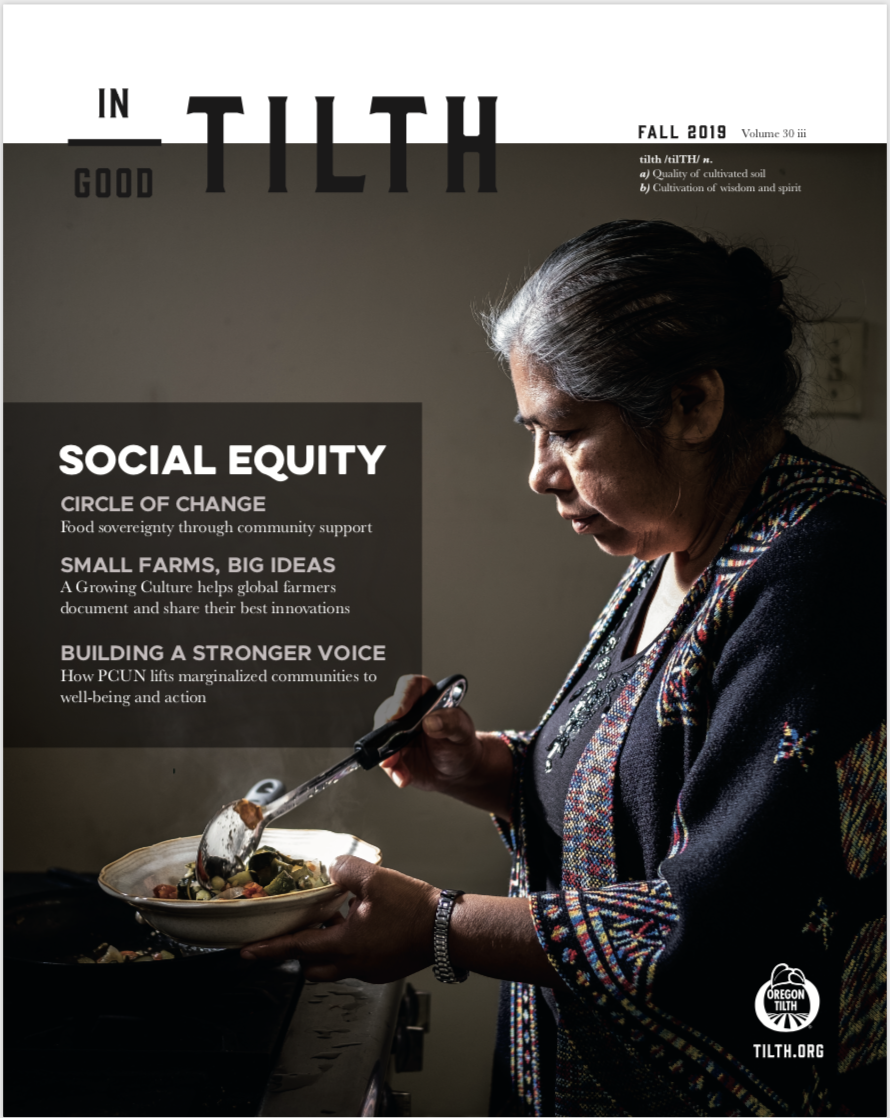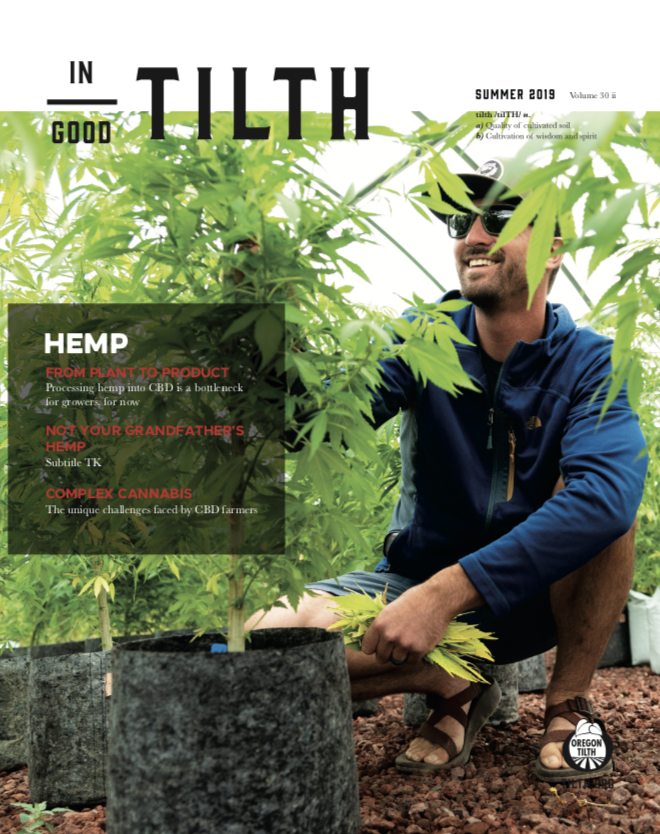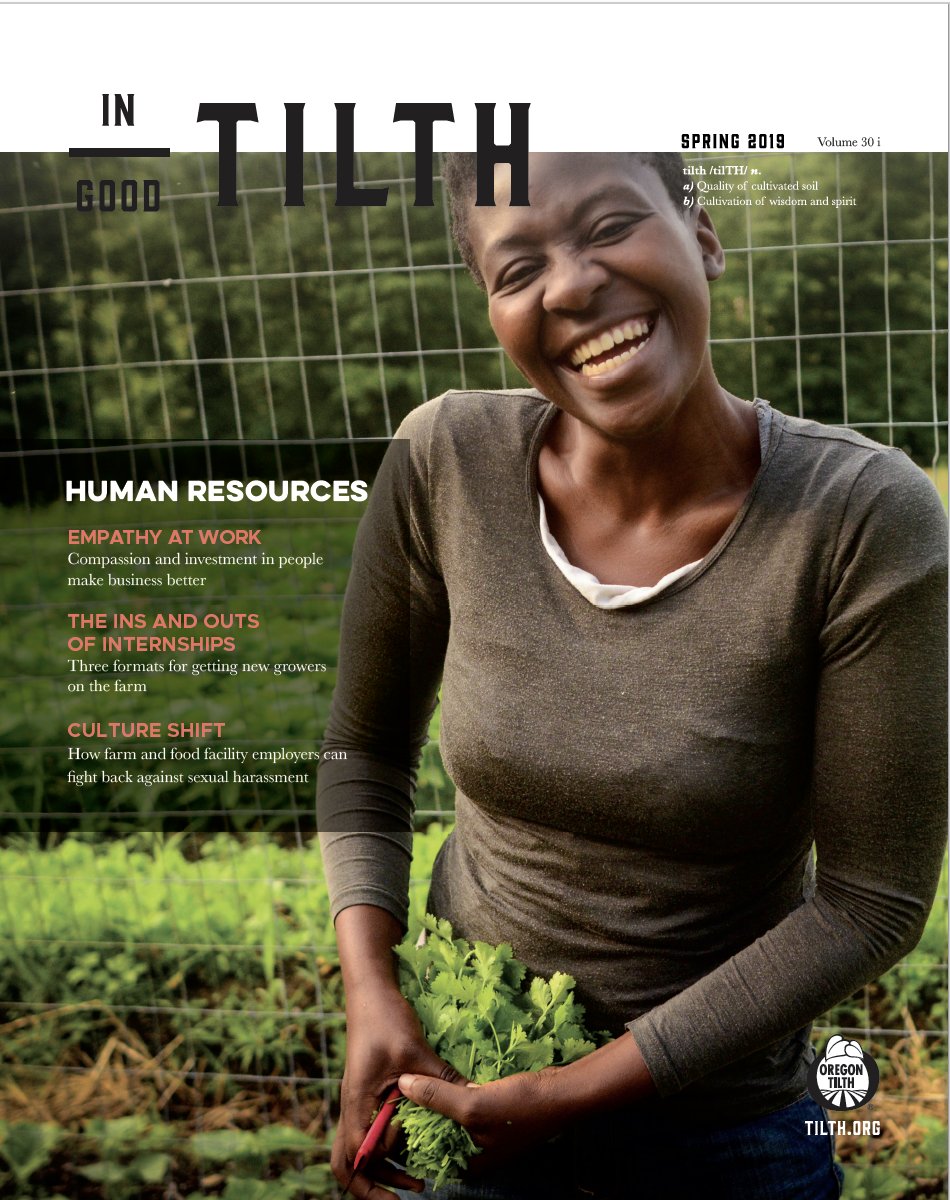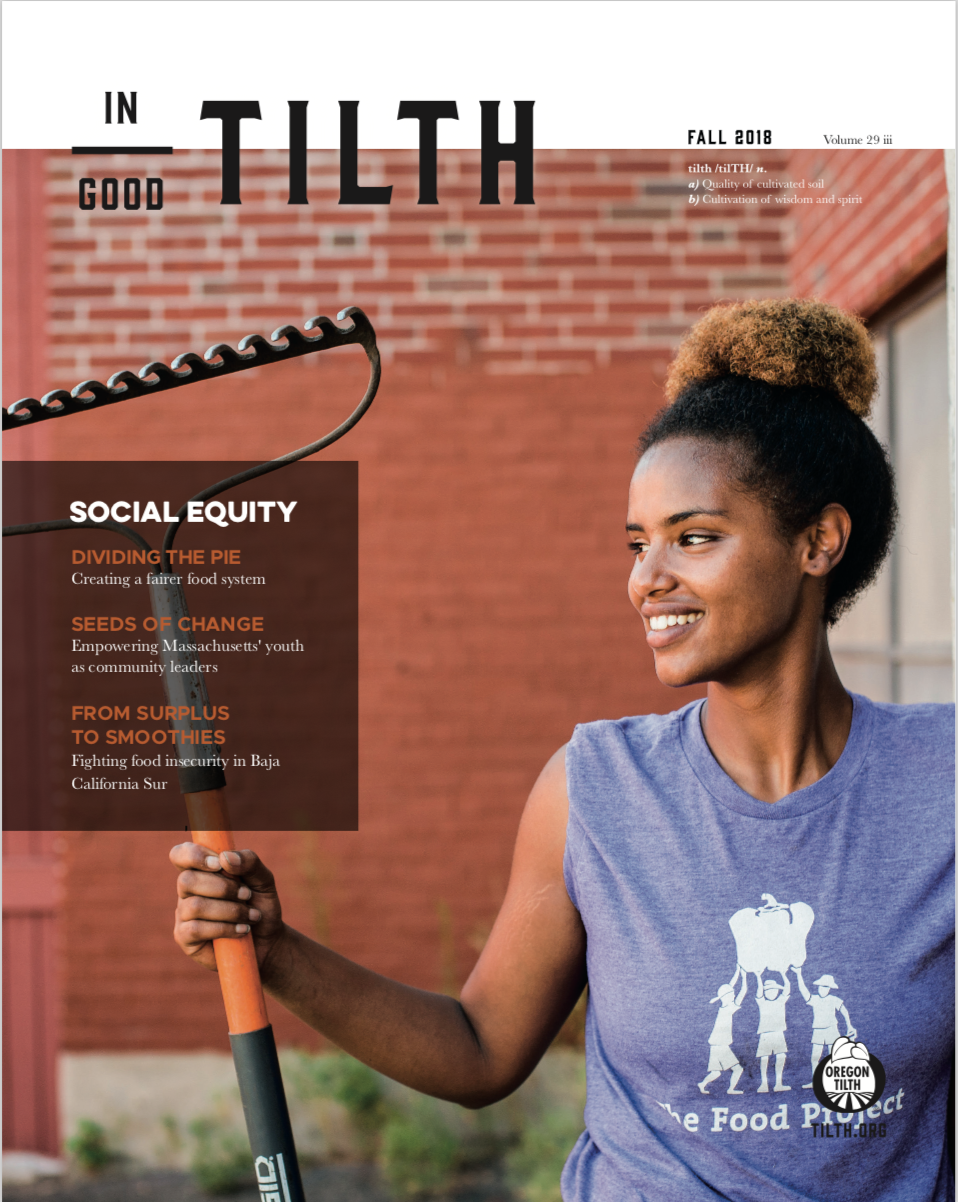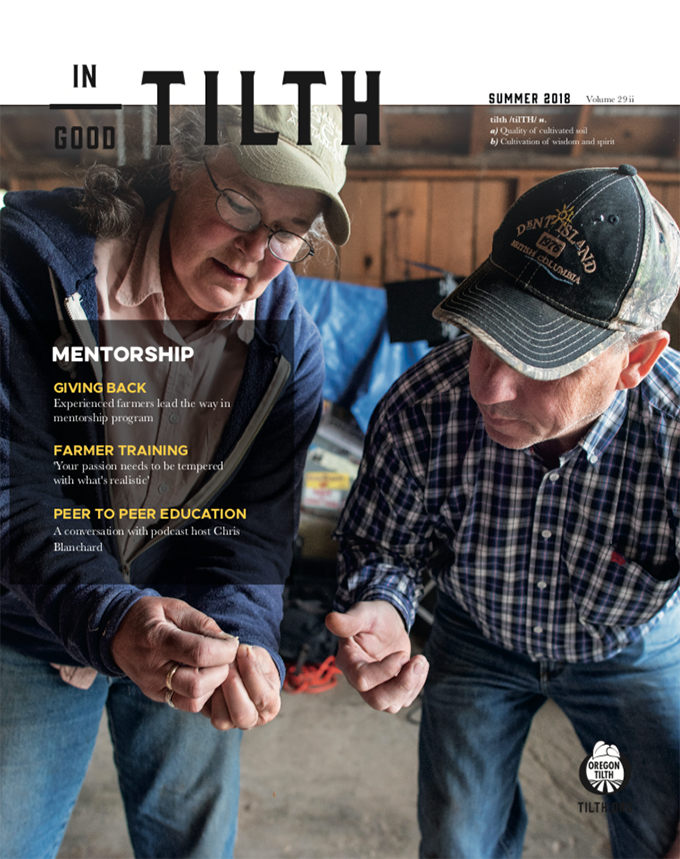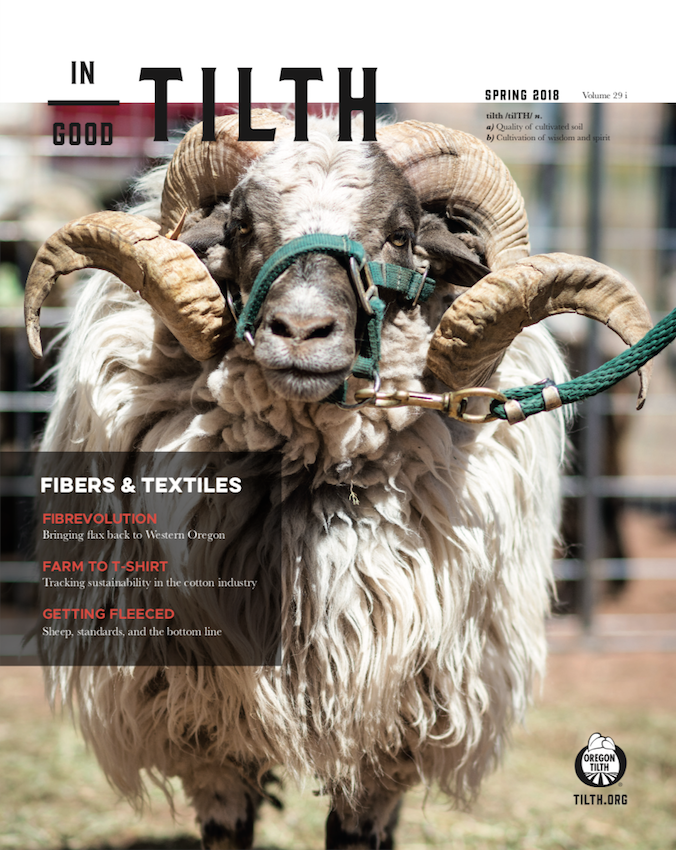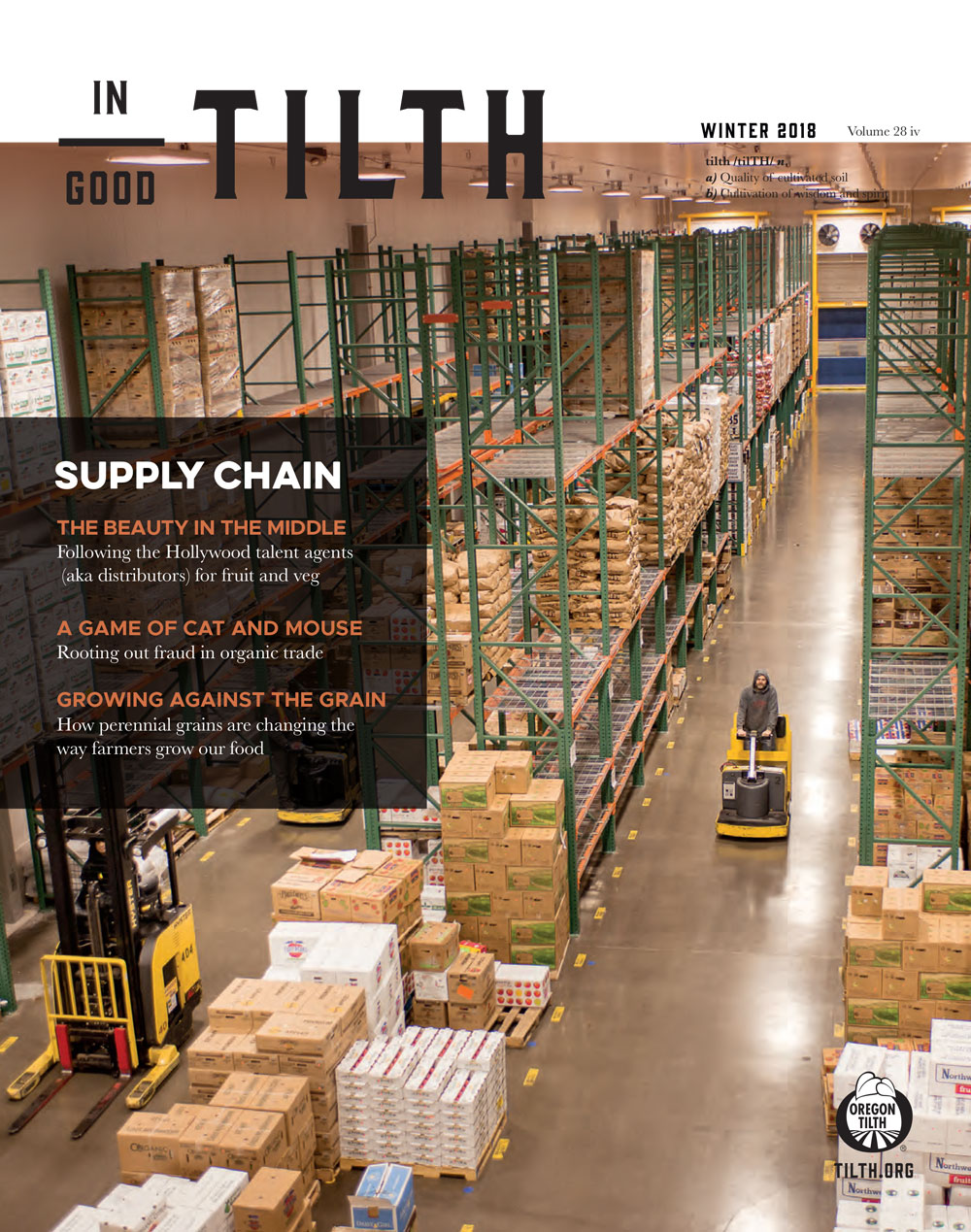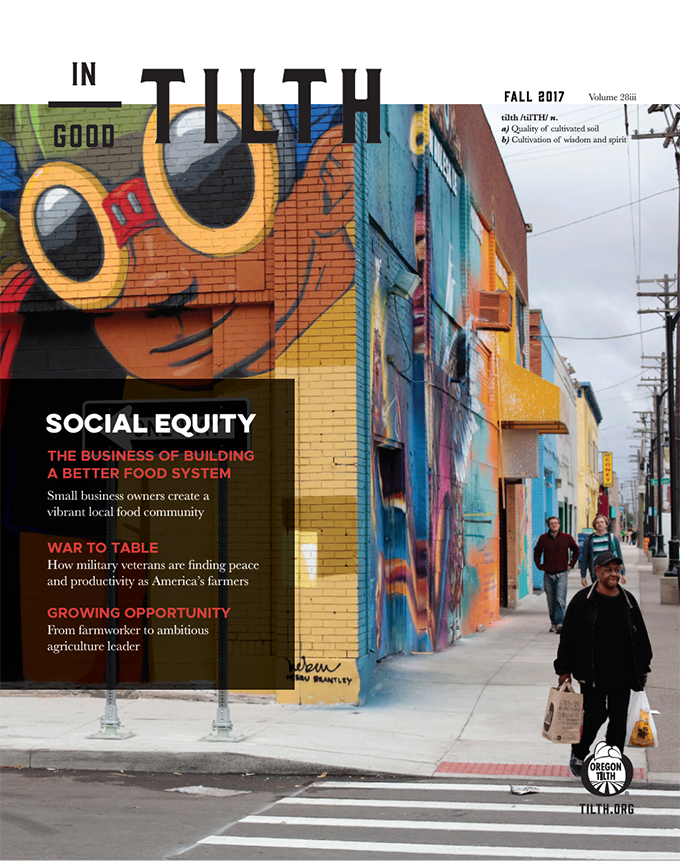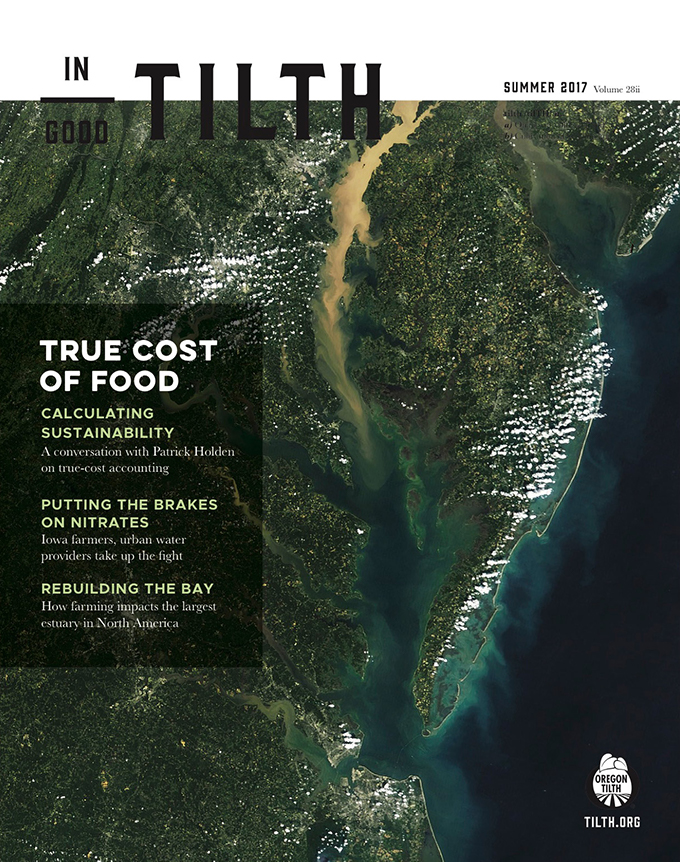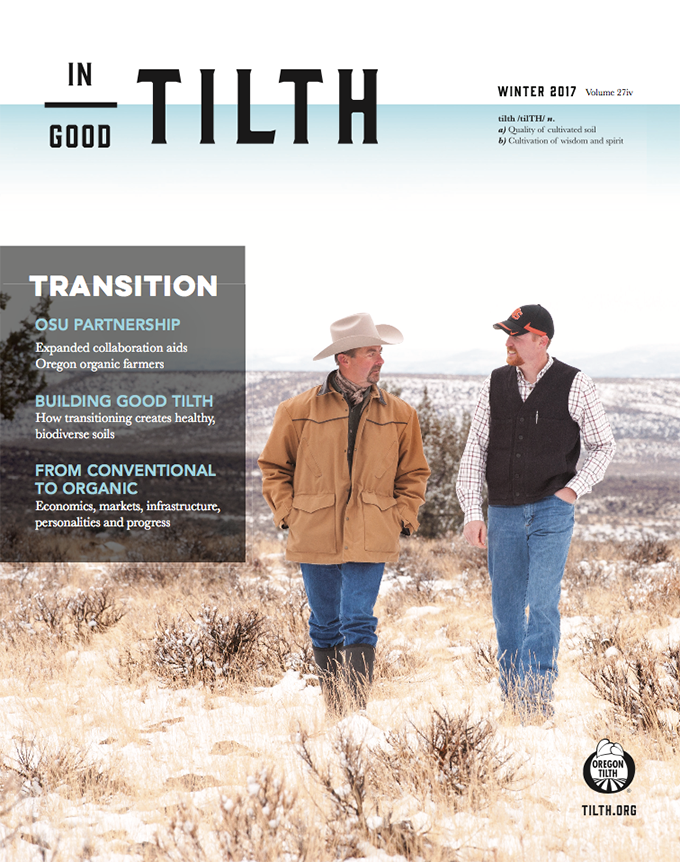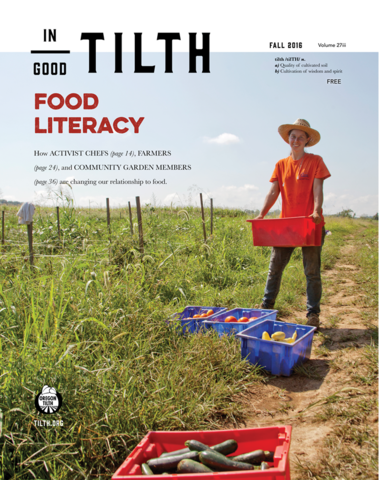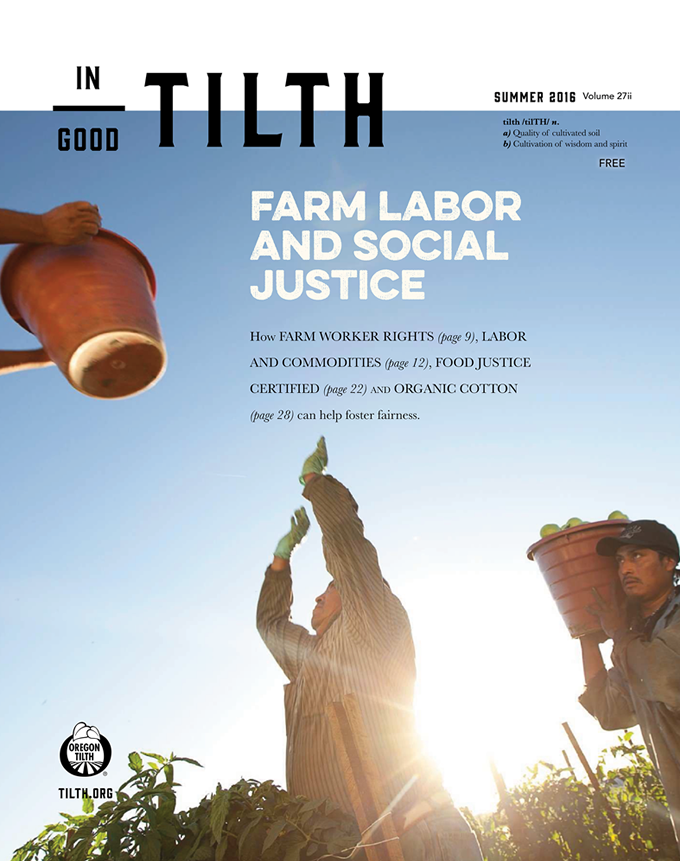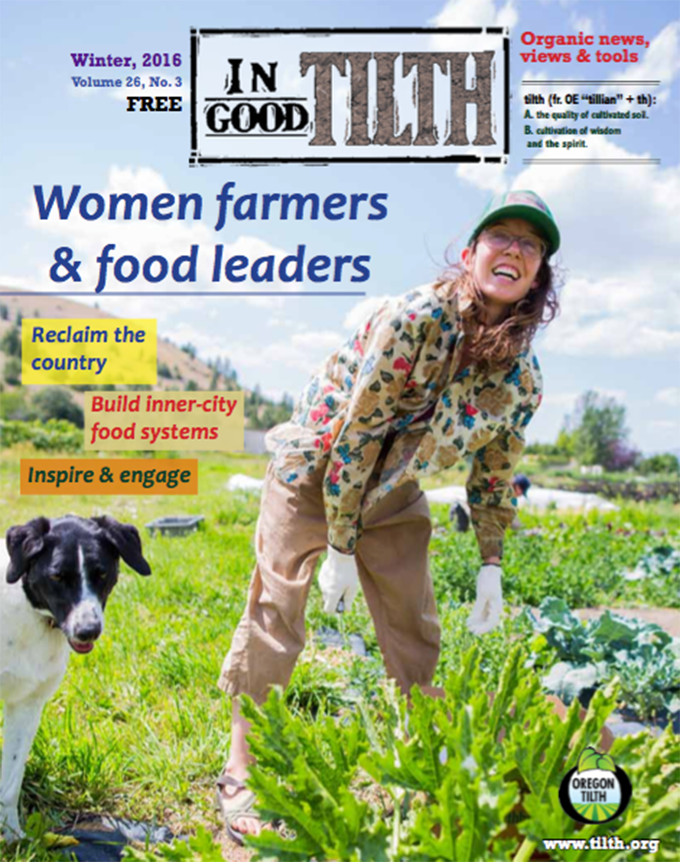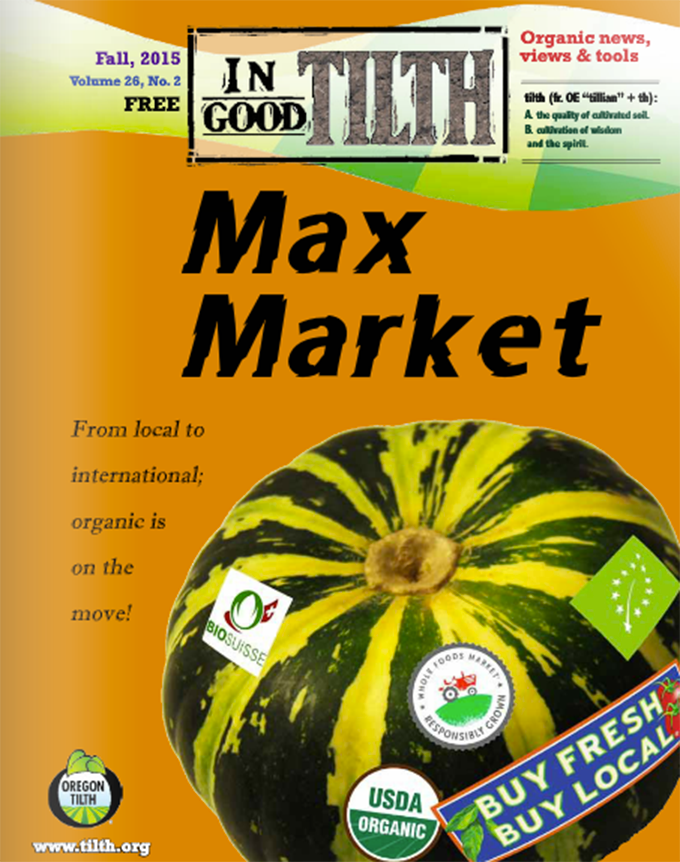It is a cold, windy morning in February. Before braving the icy commute, you blend up a bright, fresh breakfast smoothie: some pineapple, some kale, a little ginger, a few leaves of basil and maybe even a slice or two of a jalapeño to warm things up.
Depending on where you live, there is a good chance much of that produce came from Sueño Tropical, a 200-acre organic farm founded in 1985. As one of Baja California Sur’s largest organic farms, Sueño Tropical in Todos Santos, Baja, Mexico, is a major exporter of culinary herbs, vegetables and fruits to organic markets in the United States. On any given winter afternoon, hundreds of local residents and migrant workers from other parts of Mexico might be busy harvesting peppers, packing eggplant or planting cilantro to feed their neighbors to the north.
In these fields, the scene is one of abundance. But for many Mexican families, including rural families and urban residents of La Paz, Baja California Sur’s largest city, fresh food can be surprisingly hard to find. Many Mexicans are struggling to access affordable produce on a regular basis, leading to malnutrition, obesity and other diseases. But a new Oregon Tilth-supported program called the Southern Baja Food Security Alliance — a collaboration among the International Community Foundation (ICF), Raíz de Fondo, the BCS Secretariat of Social Development, Voluntarias Vicentinas, local farms like Sueño Tropical and a network of individual volunteers — aims to change all that, taking advantage of Baja’s existing resources to connect surplus produce to the people who need it.
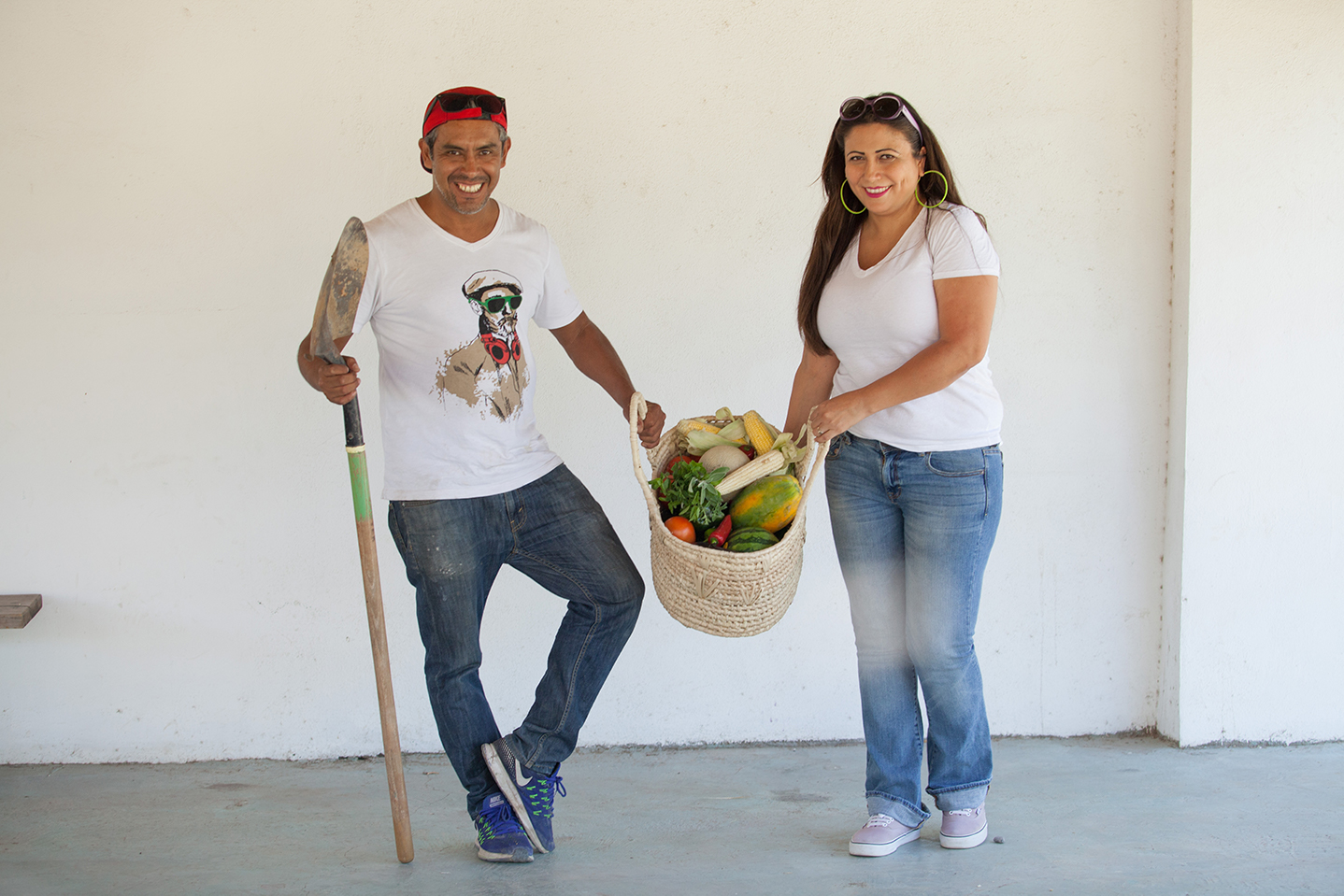
Enough of the good stuff
Mexico’s food security challenges are not about quantity — they are about quality. Obesity is becoming a major issue in Mexico, with 73 percent of the adult population and one in three children now overweight or obese. And the nation is grappling with a new epidemic of heart disease, diabetes and other diseases linked to poor-quality diets.
In cities like La Paz, low-cost, high-calorie processed foods and sodas are everywhere. Many urban Mexicans have replaced their traditional diets with prepared and packaged foods. At the same time, economic changes mean more Mexicans have sedentary rather than active jobs and lifestyles, altering nutritional needs. For the lowest-income people, picking up a bag of chips or a takeout torta at their local corner store is often cheaper and easier than traveling miles away to buy more expensive fresh foods. According to the ICF, 50 percent of families in Baja California Sur struggle to afford fresh produce.
Yet, paradoxically, many fresh foods are grown in those families’ backyards. Baja California Sur is experiencing an organic agriculture boom, and the Secretariat of Agriculture, Livestock, Rural Development, Fisheries and Food reports that Baja California Sur is among the seven states with the highest organic products export capacity. Over the past decade, the number of organic producers in Mexico has grown 500 percent, from 33,778 to about 170,000, and about 60 percent of Mexico’s total agricultural production is exported to the United States.
A certain cognitive dissonance exists regarding the fact that while low-income Baja Californians struggle to buy fresh produce, thousands of pounds of fresh, organic produce are harvested, packed and shipped to the United States every day, right from their home state. For the ICF, that discrepancy represents an opportunity: Take advantage of the unavoidable surplus production of local farms to funnel fresh foods to local families who need them.
Follow the food: from the field to the city
At Sueño Tropical, Farm Manager Logan Ross Vail said they generate about 100,000 boxes of surplus produce each season. About 60 percent of that produce is perfectly good to eat, but does not meet export quality standards.
“Nothing is wasted,” said Vail. “If it’s edible, I try to find somebody to take it. If not, it goes to the compost.”
Before the Southern Baja Food Security Alliance, Vail said he had used a range of other tactics to get edible surplus food to people who need it, starting with his own employees.
“We have 300 to 400 employees depending on the season, and we always give them first option on things,” he said. “We want to make sure they get as much organic food in them as possible.”
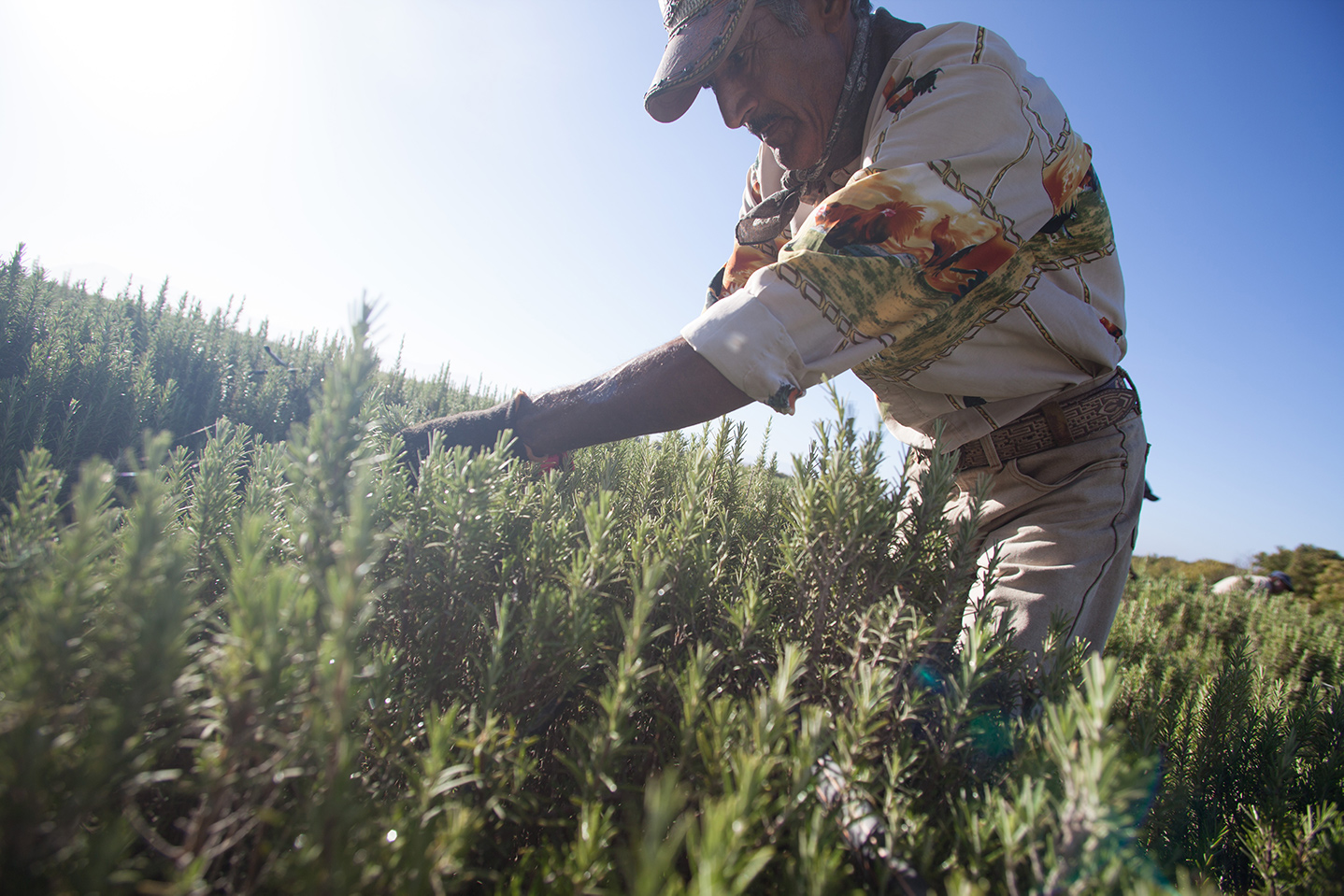
He has also worked with a range of other partners, including the local food bank, grassroots networks and community entrepreneurs, to further distribute the surplus.
But the Southern Baja Food Security Alliance has created an important new option for Vail by linking him with a new network of local volunteers able to travel to the farm to pick up food.
“Now we have more tools than we did just a few years ago,” said Vail. “It used to be that we’d have a field full of tomatoes not set for export and we’d just disc them in. Now, I have somebody to call.”
Two of those volunteers are Tamara and Todd Blankenship, an American couple living in Baja who saw an English-language flyer in a coffee shop looking for volunteers.
“As visitors to the area, volunteer opportunities are limited because we don’t speak enough Spanish to do meaningful work,” said Tamara. “But this is a fantastic way for people like us to be involved and directly impact the community they are living in without being able to speak the language.”
The Blankenships spend one full day a week traveling to participating farms to collect surplus produce, including produce that’s already packed as well as produce that needs to be picked. They said the quality of the food is exceptional.
“It’s gorgeous produce, just like what you’d buy at a high-end grocery store in the U.S.,” said Tamara.
Once their day’s rounds are complete, they transport all that produce to La Paz, where local nonprofit Raíz de Fondo helps organize local grassroots partners tasked with getting it into the hands of hungry people. Raíz de Fondo operates organic community gardens and teaches classes about organic gardening, cooking and nutrition. It is an important member of the Southern Baja Food Rescue Project because some of the crops grown for export, like eggplant, kale and beets, are not familiar to local residents. As part of the project, Raíz de Fondo offered its grassroots partners hands-on culinary education classes to show families how to prepare, eat and enjoy the foods they receive.
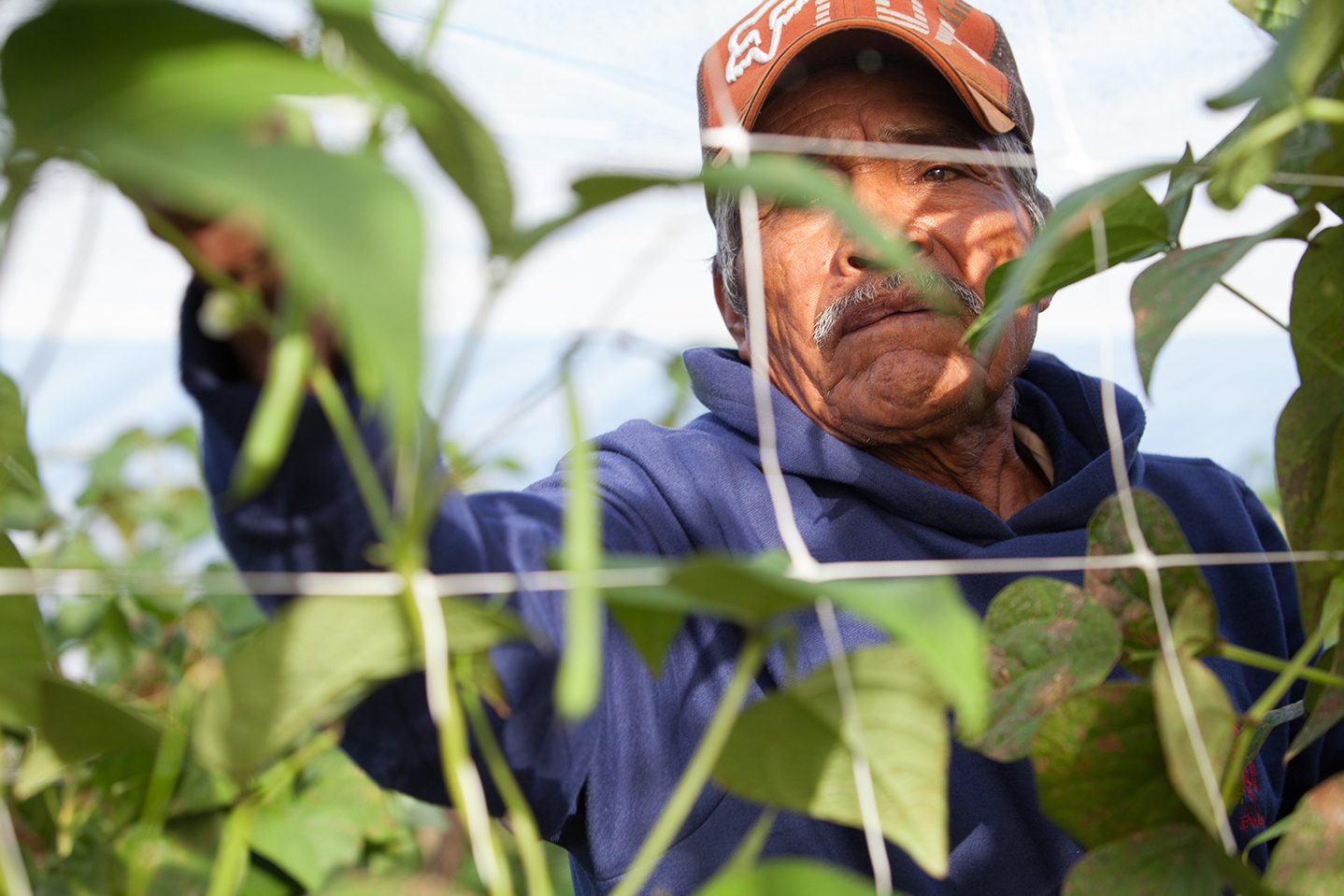
New foods, new strategies
Voluntarias Vicentinas, a nearly 400-year-old international women’s volunteer organization dedicated to helping people living in poverty, is one of Raíz de Fondo’s most important food rescue partners. In La Paz, the local Voluntarias Vicentinas chapter has been active for 35 years. Among other initiatives, it operates a community kitchen that prepares meals for elderly residents, and it also delivers produce boxes directly to low-income families.
Andrea Trasviña Talamantes, the president of the La Paz Voluntarias Vicentinas, said the weekly produce deliveries from the Southern Baja Food Rescue Program have dramatically improved the quality of the food they can serve through their kitchen and distribute to families.
“It has really been a blessing, because before it used to be a battle to get enough fresh ingredients. It has really helped to have this consistent supply,” she said.
Using some new and unfamiliar ingredients has been a fun challenge for the volunteer cooks and the community liaisons who deliver produce to families.
“There were definitely some ingredients we’re less familiar with,” said Talamantes. “But education is the first part. First, we have to educate ourselves and learn as a group about how to use these foods. Then, we pass that along to the beneficiaries.”
To help with that process, at the beginning of the partnership, Raíz de Fondo designed a “train-the-trainer” cooking class just for the Voluntarias Vicentinas. Talamantes said they learned to make a kale, celery and pineapple smoothie with ginger that was a big hit with her fellow volunteers as well as the community members they serve.
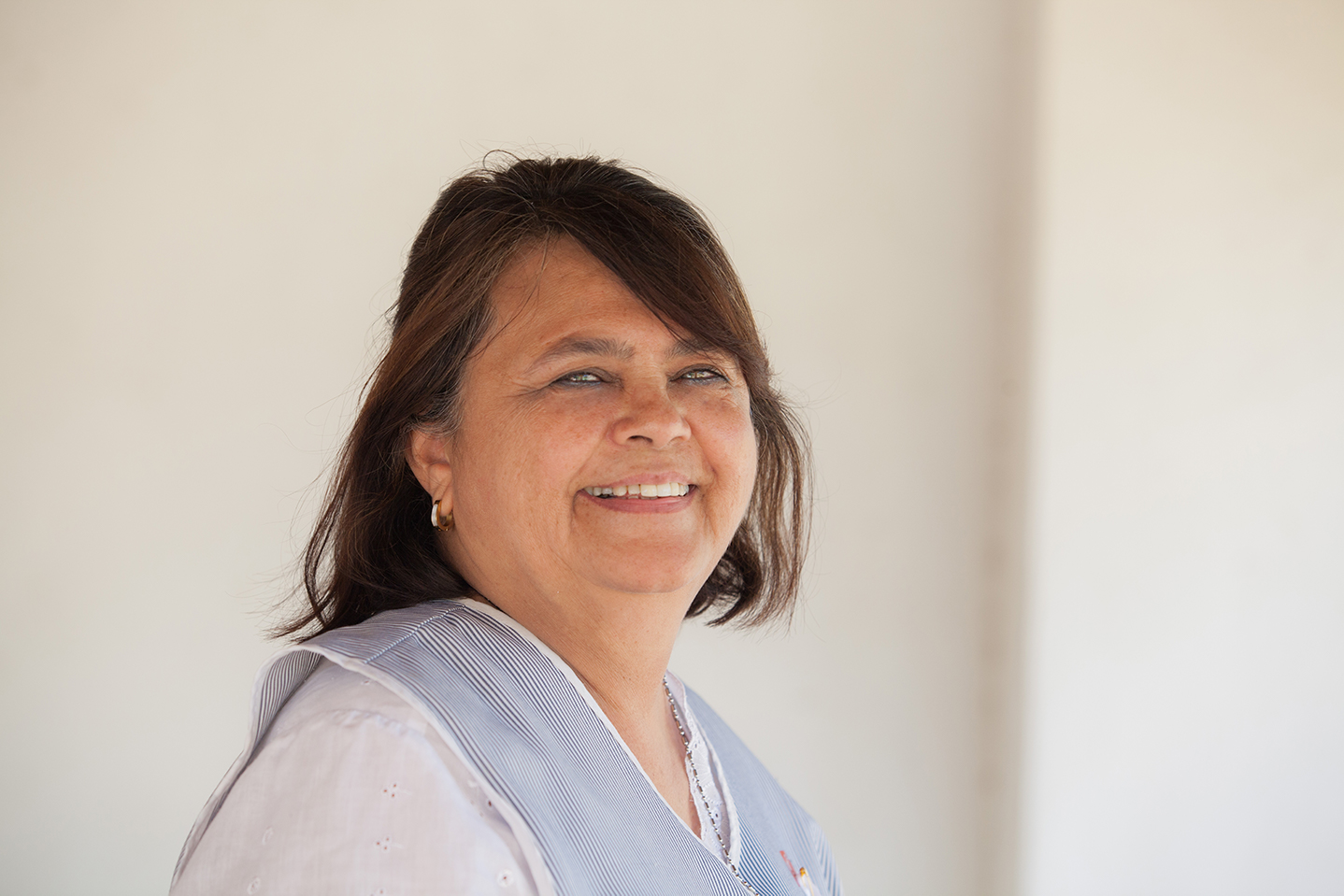
Next steps
In many ways, the Southern Baja Food Rescue Program is still in its pilot phase. The quantities of food distributed are modest, and they have plenty of room to grow and challenges to solve — like, for instance, challenges posed by a small organization with limited resources.
“It’s a small issue, but for example, there are times when a field is done and there’s disease, so the sooner I disc the field, the sooner the disease is gone,” said Vail. “But sometimes, the volunteer can’t come for three days, so that can be an issue.”
Yet for the people involved — and the people who benefit — it is an exciting new way for Mexicans to deepen community connections and increase the access to the fresh, healthy foods those of us living north of the border take for granted.
Tamara Blankenship echoes Vail’s desire for the program to grow.
“I think this is a really good and efficient model,” she said. “With more volunteers and more farms coming online, I feel like it has a huge growth potential. And, I think the other great part is that it keeps value within the community. These laborers work really hard so in the U.S. we can have inexpensive, high-quality produce. They’re the ones putting in that labor, so being able to put that effort back into the community is really impactful.”

